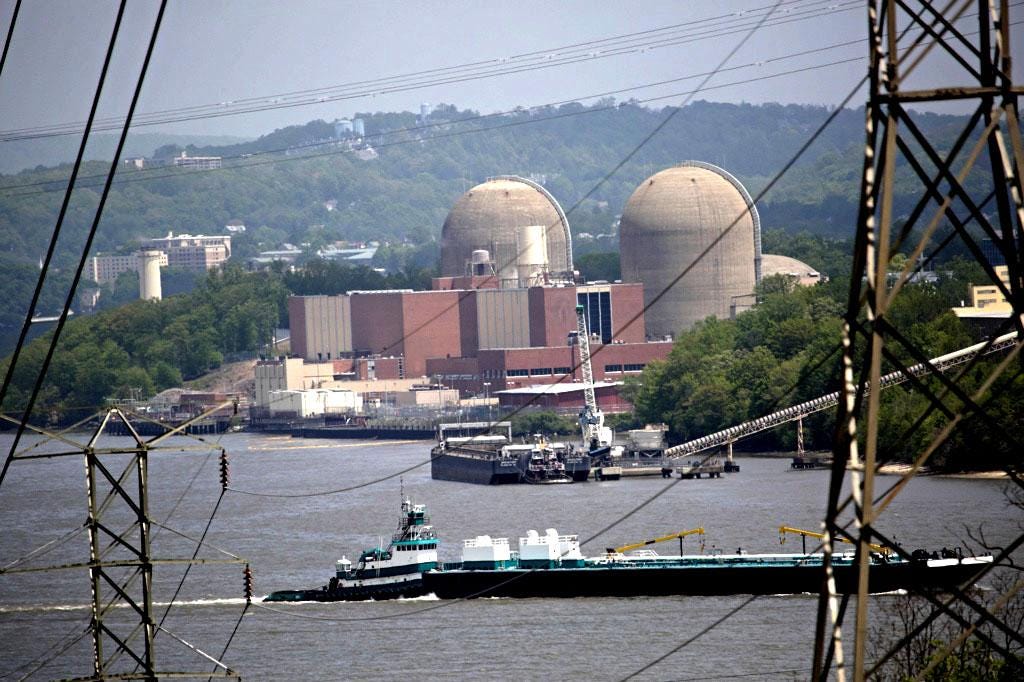Pretty pathetic excuses the failed paper insulation and the faulty valves. How come, asking coming from such a expensive and invaluable reliability piece of gear, why was it paper?
I could make the case the intense activity forcing Entergy to spend money on Pilgrim, Fitz and Indian Point is diluting the resources from Entergy's Region IV plants.
These are closely related components: why isn't this indicative of the maintenance and reliability quality problems plant wide. The idea of two problem and especially closely related components jumping out failing in one event is very worrisome. There are over 5 million parts in one plant, and this is a aging obsolete two plant facility... only a teeny percentage of component going bad can wrought terrible trouble to a plant and a fleet of plants. I think this site is getting insufficient maintenance funding just like Pilgrim, River Bend, Grand Gulf and Waterford. Entergy is in trouble!!!
- Entergy, the nuclear plant's operator, announced Tuesday the failed insulation — made of special paper — caused a short circuit in a high-voltage coil.
- The company concluded that some sprinkler valves malfunctioned and didn't automatically close as designed.
Faulty insulation caused Indian Point fire, oil spill
 Ernie Garcia, elgarcia@lohud.com 5:02 p.m. EDT June 30, 2015The company regularly inspects its insulation for signs of degradation, but no problems were seen before the fire.
Ernie Garcia, elgarcia@lohud.com 5:02 p.m. EDT June 30, 2015The company regularly inspects its insulation for signs of degradation, but no problems were seen before the fire.

A tanker goes past Indian Point on May 11, two days after a transformer explosion released oil into the Hudson River.(Photo: Ricky Flores/The Journal News)Buy PhotoStory Highlights
- About 3,000 gallons of transformer oil spilled into the Hudson River
- Transformer oil is similar to mineral oil or baby oil
An insulation failure in a transformer caused the May 9 fire at the Indian Point Energy Center that spilled about 3,000 gallons of oil in the Hudson River.
Entergy, the nuclear plant's operator, announced Tuesday the failed insulation — made of special paper — caused a short circuit in a high-voltage coil. The company regularly inspects its paper insulation for signs of degradation, but no problems were detected before the fire near the Unit 3 generator.
No radiation was released during the fire and the generator automatically shut down as designed; it resumed service May 25. Entergy said it will continue its analysis of the paper insulation.
"We have been working closely with independent engineers, and with federal and state agencies, to address issues surrounding the May 9 transformer failure, and corrective actions are well under way," said Bill Mohl, president of Entergy Wholesale Commodities, the Entergy business unit that owns Indian Point.
"These actions reinforce our commitment to environmental responsibility and transparency, as well as the continued safe, secure and reliable operation of Indian Point," he added.
The transformer contained 24,300 gallons of dielectric fluid, a clear mineral oil that serves as a cooling agent and insulation. About 8,300 gallons of oil have been recovered from the moat beneath the transformer, inside the transformer, drains and areas around the transformer yard, or were burned in the fire.
Contractors are investigating the transformer yard and other areas on site to see if more transformer oil can be recovered and prevent any potential migration. Six shoreline locations required environmental cleaning, which was completed June 5.
In another investigation related to the fire, Entergy staffers looked at why water from fire sprinklers accumulated in a building that contains electrical equipment powering some of the plant's safety systems. The company concluded that some sprinkler valves malfunctioned and didn't automatically close as designed.
None of the electrical systems were damaged by the water. Entergy is modifying its preventive maintenance and testing to ensure the sprinkler valves operate properly.
The U.S. Nuclear Regulatory Commission began a special inspection of Indian Point related to the accumulated water on May 19. That inquiry continues.
A tanker goes past Indian Point on May 11, two days after a transformer explosion released oil into the Hudson River.(Photo: Ricky Flores/The Journal News)Story Highlights

No comments:
Post a Comment